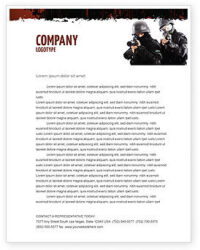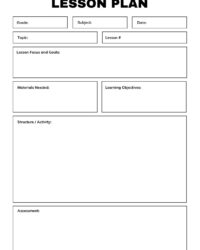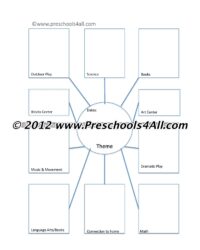Lesson planning can sometimes feel like an endless maze, a complex web of standards, activities, and assessments. You’re trying to figure out how to make sure every minute counts, how to keep your students engaged, and most importantly, how to ensure they actually *learn* what you’re teaching. It’s a common challenge for educators, whether you’re a seasoned veteran or just starting out, to bring crystal clarity to the daily classroom experience.
That’s where the power of a clear learning target comes into play, and why a well-designed learning target lesson plan template can be a true game-changer. Imagine a tool that streamlines your planning, sharpens your focus, and directly communicates to your students what they are expected to achieve. This isn’t just about ticking boxes; it’s about transforming your instructional approach from a broad overview into a laser-focused pathway to student success.
Why Embracing a Learning Target Lesson Plan Template is a Game-Changer
Shifting your lesson planning to center around clear learning targets dramatically impacts the effectiveness of your teaching. When you define exactly what students should know or be able to do by the end of a lesson, you create a shared vision for success. This isn’t just helpful for you as the instructor; it empowers students by providing them with a clear destination for their learning journey. No more guessing games about what’s important; the target is plainly visible.
A dedicated learning target lesson plan template systematizes this critical process. It ensures that every element of your lesson—from the introductory hook to the closing assessment—is intentionally aligned with your desired outcomes. This consistency is invaluable, especially when you’re managing multiple subjects or grade levels. It helps prevent “topic drift” and ensures that every activity serves a purposeful role in achieving the learning objective.
Furthermore, by clearly articulating learning targets, you enhance both student engagement and teacher clarity. When students understand the “why” behind an activity, they are more likely to invest their effort. For teachers, it simplifies decision-making during instruction, allowing for more agile responses to student needs while always keeping the ultimate goal in sight. It transforms abstract standards into actionable, observable student achievements.
Perhaps one of the most powerful benefits is the inherent alignment between instruction and assessment. When your learning target is specific and measurable, designing relevant formative and summative assessments becomes intuitive. You’re not just testing what you taught; you’re directly assessing whether students have met the stated learning goal. This creates a powerful feedback loop, allowing you to identify gaps and adjust your teaching strategies in real-time.
Key Elements to Look for in Your Template
- Target Statement: A clear, concise “I can…” or “Students will be able to…” statement.
- Success Criteria: What evidence will demonstrate that the target has been met?
- Materials: List of necessary resources for the lesson.
- Instructional Activities: Step-by-step outline of how the lesson will unfold.
- Formative Assessment: Checks for understanding during the lesson.
- Differentiation: Plans for supporting diverse learners (scaffolding, extensions).
- Closure: How the lesson will conclude and summarize learning.
How a Template Enhances Teaching Practice
A well-structured template frees up mental energy. Instead of reinventing the wheel for each lesson, you can focus your creativity on designing engaging activities and responsive teaching. It promotes accountability, not just for students, but for the entire instructional design process, ensuring that every minute in the classroom is purposeful and productive.
Crafting Your Perfect Learning Target Lesson Plan Template
While many ready-made templates exist, the true power of a learning target lesson plan template lies in its adaptability. You can tailor it to fit your specific teaching style, subject matter, and the unique needs of your students. Think of it not as a rigid form, but as a flexible framework that evolves with your practice. Starting with a basic structure and customizing it as you gain experience can make the process feel much less daunting.
The process of crafting or adapting your template should involve reflecting on what truly matters in your classroom. What information do you need to see at a glance? How do you best organize your thoughts for instruction? Do you prefer a detailed minute-by-minute breakdown or a more conceptual flow? Answering these questions will guide you in creating a template that genuinely supports your planning rather than adding extra steps.
Remember, the goal is to make planning more efficient and effective, not more cumbersome. Don’t be afraid to experiment with different layouts or add sections that are unique to your teaching context, such as a dedicated space for reflection or notes on student responses. The best learning target lesson plan template is one that you find intuitive and empowering to use consistently.
Steps to Effectively Use Your Template
- Define the Learning Target Clearly: Use student-friendly language.
- Establish Observable Success Criteria: What will students *do* to show they learned?
- Plan Engaging Activities: Design tasks that directly help students achieve the target.
- Design Formative Assessments: Build in checks for understanding throughout the lesson.
- Reflect and Revise: After teaching, note what worked well and what could be improved for next time.
Embracing a focus on clear learning targets, supported by a robust lesson plan template, elevates the educational experience for everyone involved. It shifts the paradigm from simply “covering content” to ensuring deep, measurable student understanding and skill development. This intentionality in planning fosters a more dynamic and effective learning environment.
Ultimately, by streamlining your planning process and sharpening your instructional focus, you empower yourself as an educator and your students as learners. It’s about building a clear path to mastery, one well-planned lesson at a time, ensuring that every student knows where they’re going and how they’ll get there.


